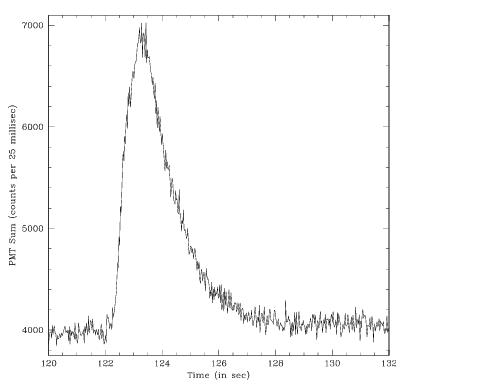3.6 Relative Photometry
While observing in Position mode, FGS3 serendipitously observed the outburst of a flare on the nearby star Proxima Centauri (Figure 3.6, see Benedict et al. 1998). The FGS has also been used to measure the relative flux of a star during an occultation of that star by the Neptunian moon Triton (Figure 3.7), and the data were subsequently used to examine the thermal structure of Triton’s atmosphere (see Elliot et al. 1998 and Elliot et al. 2000).
The absolute FGS photometric response of FGS 3 has been stable at the 2% level over the past eight years (L. Reed, BFGoodrich). FGS1r is expected to be as stable or better. For relative photometry on time scales of orbits, the FGS has been shown to be stable at the 1 milli-magnitude level, thus affording an opportunity for 0.1–0.2% time series photometry.

